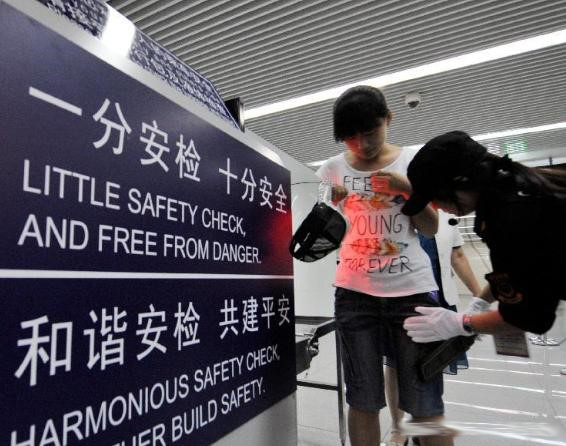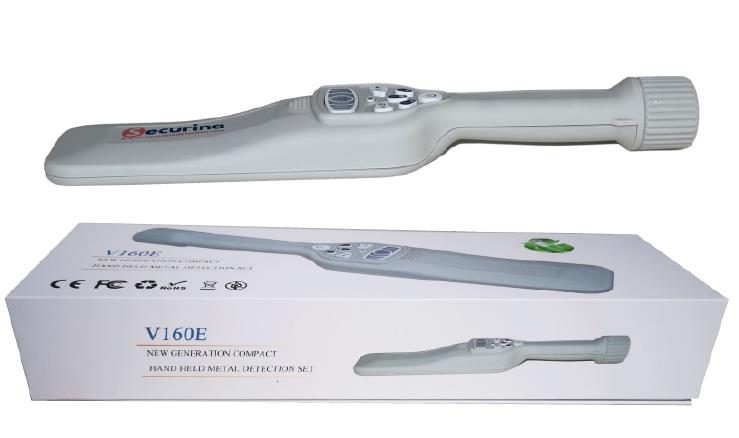Common Faults and Solutions of Handheld Metal Detector
With the advancement of science and technology, metal detectors have been updated and developed from electron tubes, transistors and even integrated circuits, and their applications have been expanded to almost all fields, which play an important role in industrial production and personal safety.
There are two types of metal detectors:
(1) Installed on the automatic conveyor belt of the factory production line to detect metals mixed in raw materials. This type is called "industrial metal detector"; (2) Installed in airports, stations, banks, jewelry stores and jewelry factories, etc., passing personnel need to be tested to prevent valuables from being lost and to eliminate dangerous and contraband. This type is called "security metal detector". So far, the basic principle of metal detection technology is still the principle of electromagnetic induction. Thanks to the electromagnetic induction phenomenon discovered by Faraday in 1831. The handheld metal detector was invented at the historic moment. Nowadays, hand-held metal detectors are composed of high-frequency oscillators, oscillation detectors, audio oscillators and power amplifiers.
So what is metal detection principle?
By adjusting the gain potentiometer of the high-frequency oscillator, the oscillator is just in the critical oscillation state, that is, the oscillator is just started to oscillate. When the detector is close to a metal object, due to electromagnetic induction, an eddy current will be generated in the metal conductor, which will increase the energy loss in the oscillating circuit, weaken the positive feedback, and weaken the oscillation of the oscillator in the critical state, or even fail to maintain the oscillation. Stop the vibration with the minimum energy required. The detected change is converted into a sound signal, and according to whether there is a sound, it can be determined whether there is a metal object under the detection coil. If a certain part is detected during the personal inspection, the metal detector alarms to indicate that there is a metal object.

Now that we know the basic principle and structure, how accurate is its work?
The magnetic field is invisible and cannot be grasped. It will also be affected by other factors. Hand-held metal detectors are particularly suitable for finding hidden metal objects. But generally speaking, the hidden depth of metal objects must be within 30cm before the metal detector can find them. Most detectors have a normal maximum detection depth, which is about 20 to 30 cm. The shallower the target is hidden, the greater the intensity of the magnetic field collected by the receiving coil and the greater the current generated. The deeper the target is hidden, the weaker the magnetic field. If it exceeds a certain depth, the magnetic field strength of the target is too weak to be detected.
The accurate value of detection depth is affected by the following factors:
1. The type of metal detector detection technology is the main factor that affects the detection capability. In addition, there will be differences between detectors using the same technology, and their additional functions will also be different. For example, some low-frequency detectors use higher frequencies than others, and the coil size of different detectors will vary. In addition, different manufacturers and different models of products of the same manufacturer use different sensing technologies and amplification technologies.
2. Metals with different metal types of the target have different ability to generate magnetic fields. Metals that can generate a stronger magnetic field are easier to detect. For example, iron can generate a strong magnetic field and is easy to detect, while aluminum is not easy to detect. The size of the target object The size of the target object affects the size of the magnetic flux, thereby affecting the induction intensity. The larger the target, the greater the intensity of the induced current and the easier it is to detect. Target components Some substances are natural conductors and may seriously interfere with metal detectors. The sideband effect of the target If certain types of metal targets are hidden for a long time, this will actually enhance the conductivity of adjacent materials.

Although hand-held metal detectors are only the simplest inspection equipment in security inspection work, they are also an important part of the inspection process. It is used almost as long as there is a security check. Therefore, its frequency of use is very high, and regular use will accelerate the loss of equipment. In order to prolong its service life, it is necessary to do maintenance work at ordinary times.
Handheld metal detector maintenance steps:
(1) When the metal detector wand is not in use, set the switch to "OFF" and keep the surface of the metal detector clean and dry.
(2) The battery must be removed if it is not used for a long time, and be careful to prevent the battery from short-circuiting during storage.
(3) The voltage of the dry battery or Ni-MH battery placed in the battery slot is 9V, and cannot exceed 9V, otherwise the internal components of the detector may be damaged.(V160E with power supply by 2xAA batteries)
(4) Under no circumstances should the hand-held metal detector be placed in water or exposed to large amounts of water to prevent short-circuit damage of internal components.
(5) During use, avoid the detector from colliding with hard objects vigorously or falling from a height to damage the internal components.
(6) When charging, be sure to put a usable rechargeable battery in the battery compartment. Do not charge the dry battery to avoid explosion.
(7) In order to keep the appearance of the hand-held metal detector tidy, it can be cleaned with a damp cloth, but not with chemical cleaners.

Common faults and solutions of handheld metal detectors:
(1) Vibration or alarm will not stop after 1-2 seconds after booting. In most cases, the sensitivity of the instrument is too high or the voltage is insufficient. The sensitivity of the detector can be lowered. If the adjustment still cannot be eliminated, charge the battery or replace with a new battery.
(2) The red light is always on when starting up, no alarm or vibration. Generally, when the detector is out of service, the battery is not taken out, and the battery is discharged slowly for a long time, resulting in insufficient power. You can replace the battery with a new one or check whether the battery box is contaminated by battery leakage. If it is polluted, clean it in time, otherwise it will corrode and damage the battery button and circuit board. You can clean it with pure alcohol or a special electronic cleaning agent.
(3) It will alarm if anything is detected after starting up, or even if there is slight shaking. Generally, it is because the sensitivity is adjusted too high, or after the sensitivity is increased to detect small metals, it is not adjusted to the original normal position in time. As long as the sensitivity is appropriately lowered.
(4) For handheld metal detectors with vibration, sometimes the buzzer works normally, but the vibration motor cannot stop when it turns to vibration. This is because the battery voltage has dropped significantly, the motor power consumption exceeds the buzzer, and the battery voltage can only guarantee the normal operation of the buzzer. The sensitivity of the instrument can be lowered under vibration conditions. If it is invalid, the battery can be replaced or recharged before use.
(5) It appears from time to time when it is turned on, and from time to time it is not normal. It will alarm for a while, but there will be nothing. This is generally caused by poor battery contact. Open the battery box and re-press it; if the battery buckle is too loose, use pliers to gently clamp it; if the battery buckle is not flexible or damaged, replace it with a new one. When replacing, pay attention to whether the positive and negative poles are connected reversely.

Securina as a Chinese factory specializing in manufacturing metal detectors, has 15 years of R&D and production experience. A variety of equipment with different prices for you to choose, welcome to email and call to ask for the latest price list.